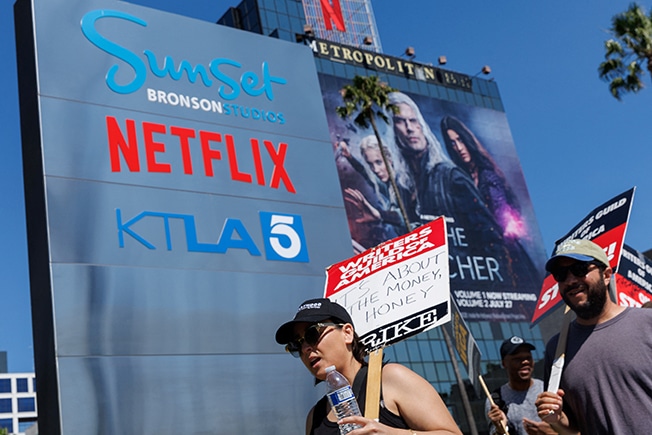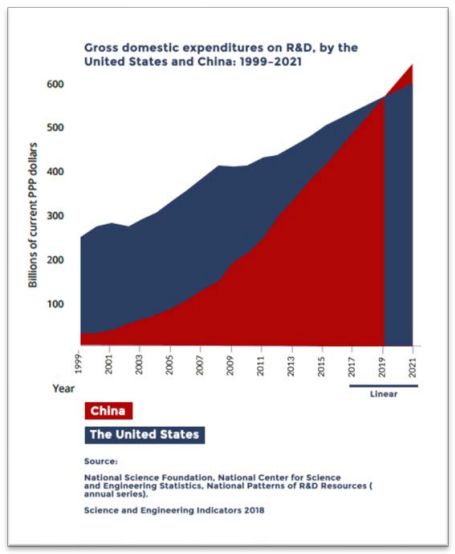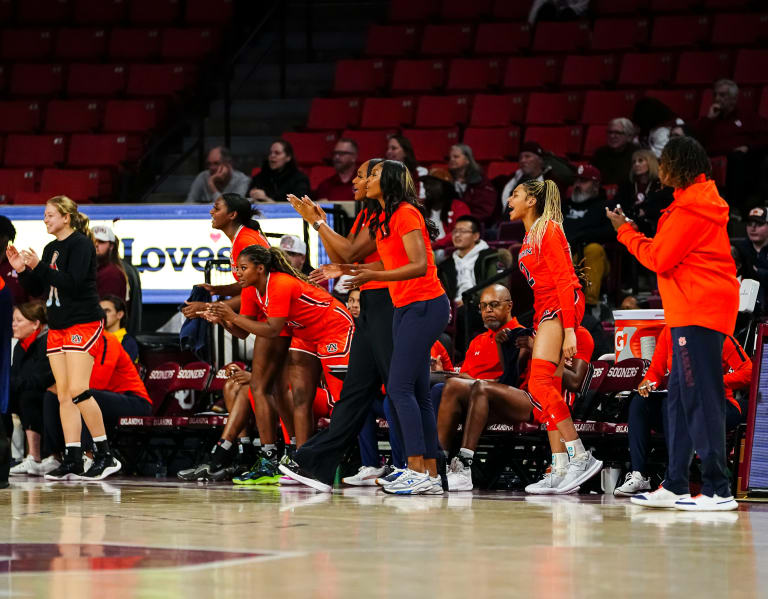Actors Join Writers' Strike: Total Hollywood Production Freeze

Table of Contents
The entertainment industry faces an unprecedented shutdown. The actors' strike, joining the already ongoing writers' strike, has created a total Hollywood production freeze. This double strike, unlike anything seen before, has far-reaching consequences for film and television production, impacting everything from blockbuster studio releases to small-scale independent projects. This article will examine the reasons behind the actors' decision to join the picket lines, analyze the combined impact of both strikes, and explore the potential implications for the future of the entertainment industry.
The Actors' Strike: Reasons and Demands
SAG-AFTRA's Key Grievances:
The Screen Actors Guild - American Federation of Television and Radio Artists (SAG-AFTRA) joined the Writers Guild of America (WGA) on strike, citing several crucial grievances. These issues highlight a growing power imbalance between studios and performers, exacerbated by the rise of streaming services.
-
Fair wages in the streaming era (residuals, backend participation): Traditional television and film models provided actors with residuals – payments based on the continued airing or streaming of their work. Streaming services have significantly reduced or eliminated these residuals, leaving many actors with drastically lower compensation despite the immense popularity of their shows. This disparity is a major point of contention. SAG-AFTRA is demanding a fairer share of the massive profits generated by streaming platforms.
-
Protecting actors from AI usage in film and television: The increasing use of AI in the entertainment industry poses significant threats to actors' livelihoods. SAG-AFTRA is fighting for protections against the unauthorized use of actors' likenesses and performances through AI technology, ensuring that actors receive proper compensation and consent for any AI-generated use of their work. This includes concerns about the potential for AI to replace human actors entirely.
-
Improving working conditions on set: SAG-AFTRA members consistently report long working hours, unsafe conditions, and a lack of adequate rest periods. The union is pushing for stricter regulations to ensure safer and more humane working environments for all actors.
-
Addressing the power imbalance between studios and actors: The strike underscores a growing power imbalance between major studios and the performers who bring their productions to life. SAG-AFTRA is demanding more equitable contract terms, reflecting the true value of actors' contributions to the success of films and television shows. For example, they are fighting for better health insurance and pension plans.
Examples: Specific examples include instances where actors have received minimal compensation for shows that have become global streaming hits, and anecdotal accounts of unsafe working conditions on major studio sets. Quotes from SAG-AFTRA representatives emphasizing these points will further strengthen the argument.
The Combined Impact of the Writers' and Actors' Strikes
The simultaneous strikes by both writers and actors have brought Hollywood to a complete standstill, creating a ripple effect across the entire industry.
Production Halt:
The impact is sweeping and profound. Major studio productions, including films and television series, have ground to a halt. Independent film projects and smaller productions are equally affected, creating a widespread disruption unseen in decades.
Economic Impact:
The economic ramifications are far-reaching. Studios and production companies face significant financial losses due to production delays and cancellations. Crew members, including camera operators, grips, and makeup artists, are also facing unemployment and financial hardship. Local economies reliant on Hollywood production are experiencing a considerable downturn.
Delay of Film and TV Releases:
The consequences extend to audiences. Numerous anticipated film and television releases are facing significant delays, impacting release schedules and potentially altering marketing strategies for studios.
Examples: Specific examples of delayed productions should be named, alongside financial projections from industry analysts and concrete examples of release date postponements. For example, the delay of Marvel projects or the postponement of new seasons of popular streaming series.
Potential Outcomes and Negotiations
The current situation presents several potential scenarios, each with its own implications.
Potential Scenarios:
- Quick resolution: A swift resolution through successful negotiations could minimize the long-term effects on the industry.
- Prolonged stalemate: A prolonged strike would cause far-reaching economic damage and lead to lasting changes in the industry’s landscape.
- Concessions from both sides: A compromise involving concessions from both the actors' union and the studios would be a possible, but potentially delicate, resolution.
Negotiation Strategies:
Both SAG-AFTRA and the Alliance of Motion Picture and Television Producers (AMPTP) are employing various negotiation strategies. Understanding these strategies is crucial to predicting the outcome.
Public Opinion and Support:
Public opinion plays a vital role. High levels of public support for the striking actors and writers strengthen their negotiating positions and increase pressure on the studios.
Examples: Specific details of any ongoing negotiations, including any reported offers and counter-offers, should be included. Public opinion polls showing support for the strike should be cited. Possible compromise solutions, such as tiered residual payments based on streaming viewership, could also be discussed.
Conclusion
The actors' strike, coupled with the ongoing writers' strike, represents an unprecedented moment in Hollywood history. The reasons behind the actors' walkout – fair wages in the streaming era, protection from AI usage, improved working conditions, and addressing the power imbalance with studios – are compelling and resonate with many within and outside the entertainment industry. The combined impact on production, the economy, and the release of films and television shows is immense. The potential outcomes of the strike range from a rapid resolution to a prolonged stalemate, significantly shaping the future of the entertainment industry.
Call to Action: Stay informed about the unfolding Hollywood actors' and writers' strike. Follow reputable news sources for updates on negotiations and the overall impact of this unprecedented production freeze. Learn more about the demands of SAG-AFTRA and the Writers Guild of America (WGA) to understand the issues at stake and how this significant event shapes the future of entertainment. Understanding the complexities of this dual Hollywood strike is crucial for anyone interested in the future of film and television.

Featured Posts
-
 The Ai Arms Race How Us And China Outpaced Middle Eastern Competitors
May 07, 2025
The Ai Arms Race How Us And China Outpaced Middle Eastern Competitors
May 07, 2025 -
 Le Conclave Au Vatican Un Apercu Du Processus Electoral
May 07, 2025
Le Conclave Au Vatican Un Apercu Du Processus Electoral
May 07, 2025 -
 Must Read Top 5 Nie Articles Of Q1 2025
May 07, 2025
Must Read Top 5 Nie Articles Of Q1 2025
May 07, 2025 -
 2000 Yankees Diary Comeback Bid Falls Short Record At 500
May 07, 2025
2000 Yankees Diary Comeback Bid Falls Short Record At 500
May 07, 2025 -
 Should You Invest In Xrp Ripple In 2024 A Prudent Analysis
May 07, 2025
Should You Invest In Xrp Ripple In 2024 A Prudent Analysis
May 07, 2025
